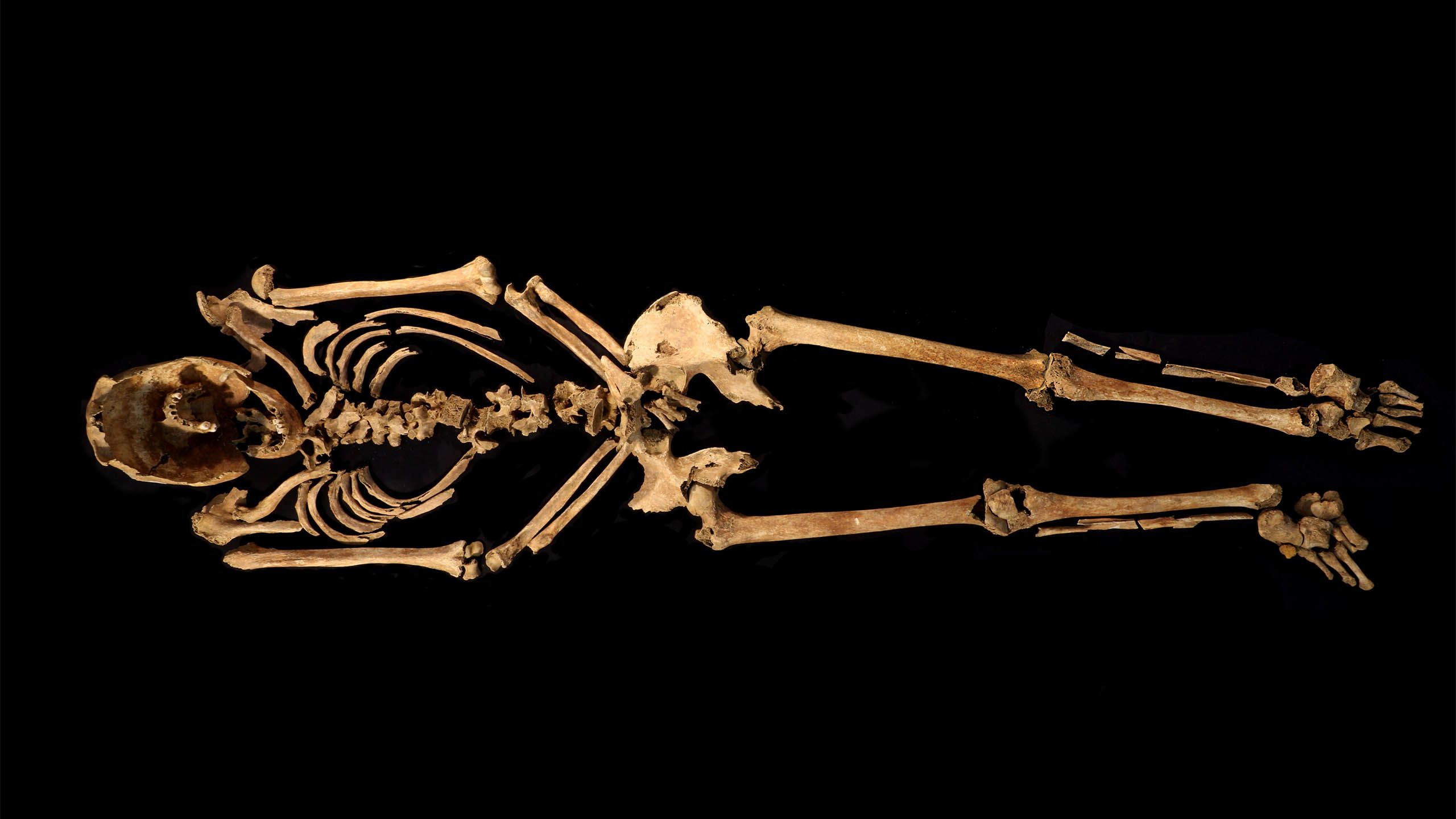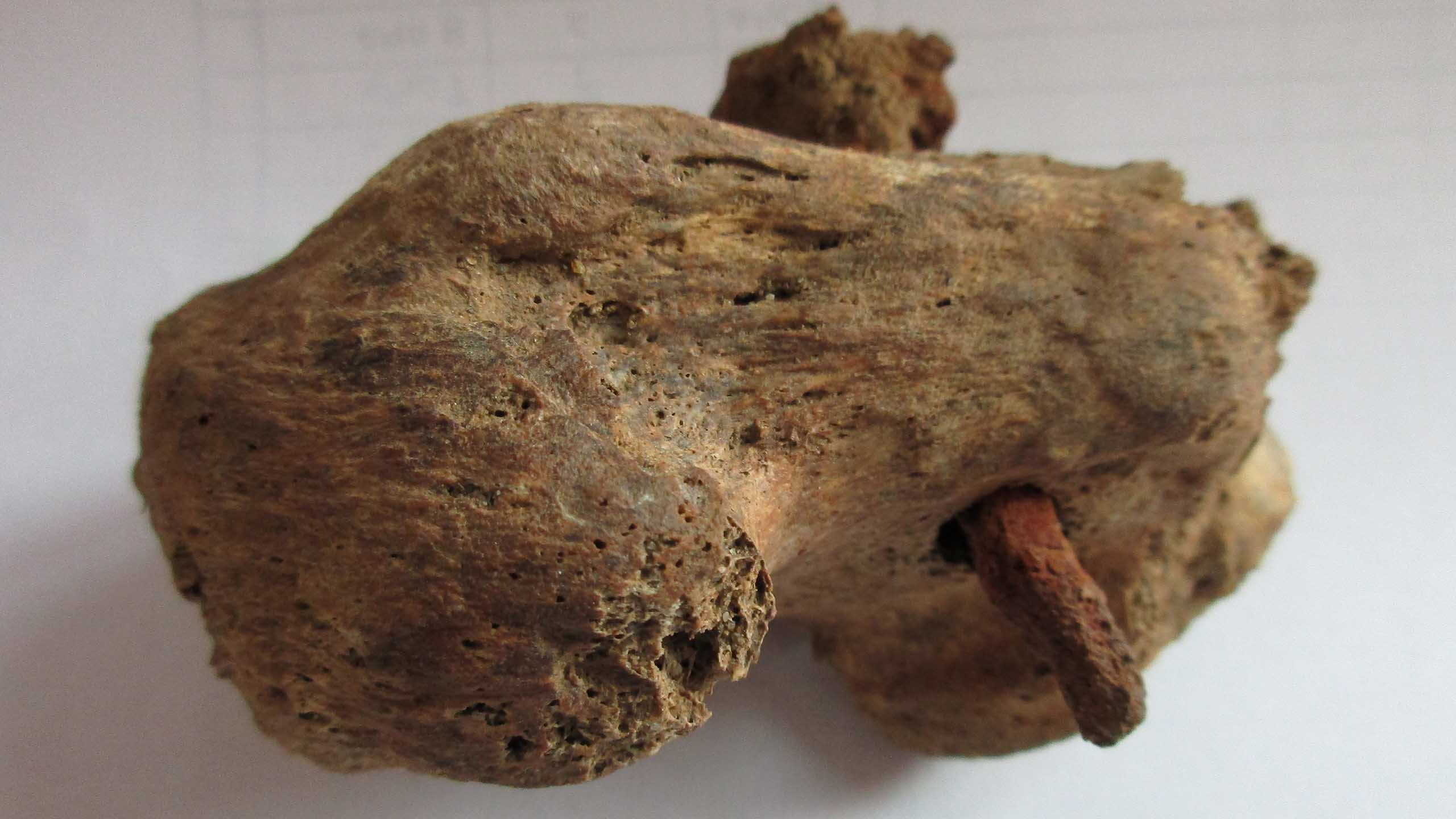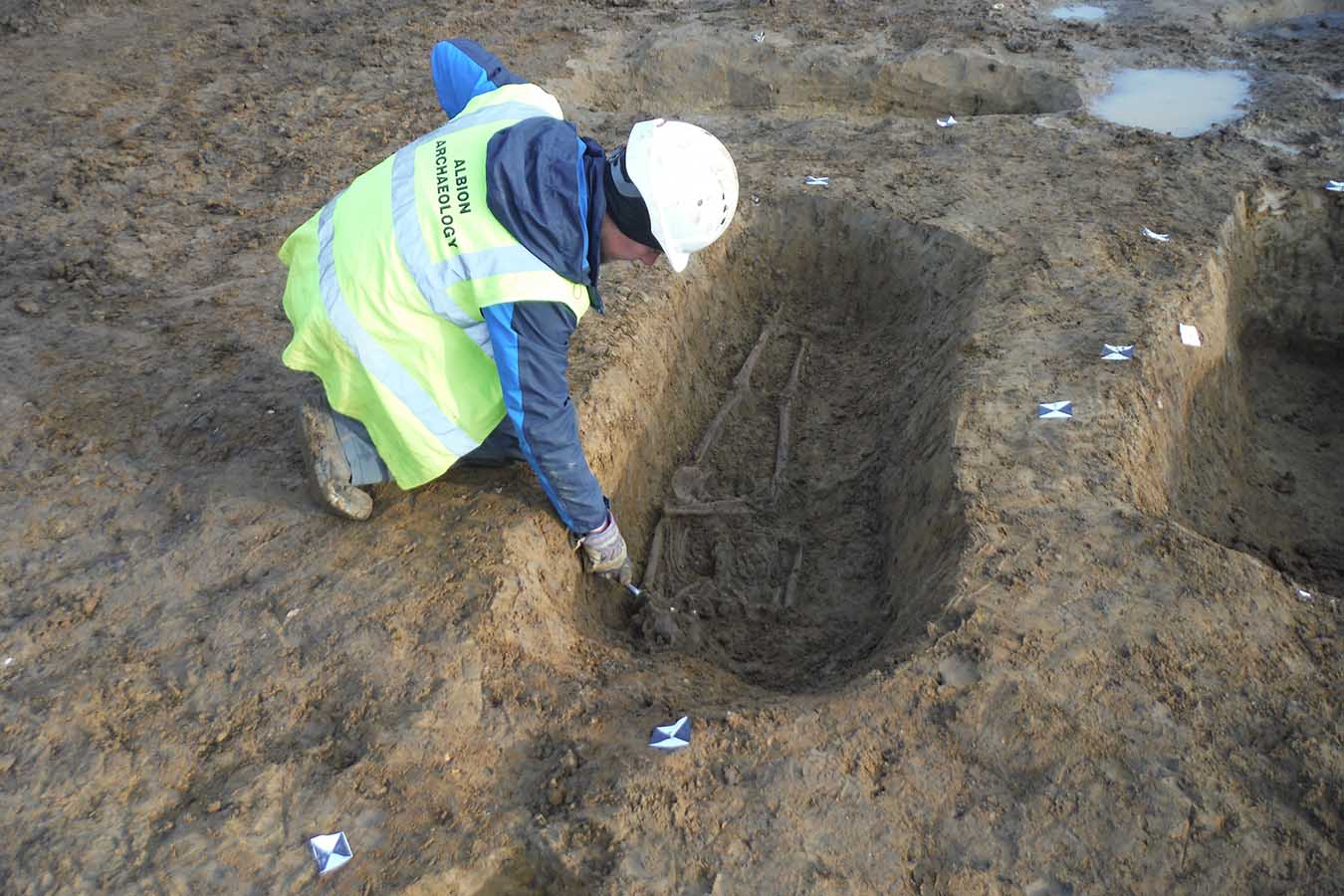Evidence of a Roman crucifixion found in Cambridgeshire

The finding in the village of Fenstanton is the only known example of a Roman crucifixion in the British Isles, and perhaps the best preserved in the world.

The iron nail through the heel bone of Skeleton 4926.
The iron nail through the heel bone of Skeleton 4926.
Archaeologists investigating a previously unknown Roman settlement ahead of a new housing development in Cambridgeshire have discovered the remains of a man with a nail through his heel.
A team including University of Cambridge osteoarchaeologist Dr Corinne Duhig believe this may be the “best preserved” example of a Roman-era crucifixion anywhere in the world.
The find, on the site of a former milk-bottling plant in the village of Fenstanton, was unearthed during the 2017 excavation of five small Roman cemeteries holding the remains of 40 adults and five children. The graves are mainly from the fourth century AD, and the contents have recently been fully analysed.
Most of the remains showed signs of poor health including dental disease, malaria and physical injuries such as fractures. One male skeleton, laid out in his grave like the others, was found with a 5cm iron nail driven horizontally through his right heel bone (calcaneum).
Dental analysis suggests that the man – named Skeleton 4926 by archaeologists – was aged between 25 and 35, and around 5 foot 7 inches in height (average for the time). Radiocarbon dating techniques indicate he died between AD130 and AD360.
Skeleton 4926 was buried surrounded by twelve iron nails and alongside a timber structure thought to be a “bier” – or wooden board – on which his body may have been laid once removed from the cross.
His remains showed signs of trauma prior to death. The team found evidence of infection or inflammation on his legs including thinning of the shin bones: indicative of having been bound or shackled.
The “13th nail”, the one penetrating the heel, was only discovered in the lab when the bones were washed. A smaller indentation was found next to the main hole, suggesting an initial attempt to nail him to the cross “misfired”.
Although crucifixion was common in the Roman world, osteological evidence for the practice is extremely rare, according to Duhig, as nails were not always used – the victim was normally just tied to a crossbar – and bodies were not typically given formal burials.
Where nails were used, it was common practice to remove them after crucifixion to be re-used, discarded or repurposed as amulets.
“The lucky combination of good preservation and the nail being left in the bone has allowed me to examine this almost unique example when so many thousands have been lost,” said Duhig, a Director of Studies in Archaeology at two Cambridge colleges: Wolfson and Lucy Cavendish.
“This shows that the inhabitants of even this small settlement at the edge of empire could not avoid Rome's most barbaric punishment,” said Duhig, who is also a lecturer at the Institute of Continuing Education.
The excavation was led by David Ingham of Albion Archaeology, and the full results of the analysis are due to be formally published next year. The first details of the finds are reported today in the magazine British Archaeology.

An archaeologist next to the grave of the crucified man.
An archaeologist next to the grave of the crucified man.
Cambridgeshire County Council say they are currently working to arrange a museum exhibit to showcase the remains. “Burial practices are many and varied in the Roman period and evidence of ante-or post-mortem mutilation is occasionally seen, but never crucifixion,” said Kasia Gdaniec from the Council’s Historic Environment Team.
A number of Roman artefacts were uncovered along with the human remains. Noteworthy findings included enamelled brooches, large numbers of coins, decorated pottery and significant quantities of animal bones displaying specialist butchery methods.
These, along with a large building and formal yard or road surfaces, indicated the presence of an organised Roman settlement with obvious signs of trade and wealth.
Archaeologists say the settlement might have been maintained as a formal stopping place along the road to service travellers around which the village grew, and there is some evidence to suggest that it developed at a crossroads.
Citizenship was extended to all free persons in the empire in AD212, and crucifixion was banned for citizens after the AD337 edict of Constantine. Slaves, however, could still be crucified, and exceptions were also made for certain crimes such as treason.
Duhig and colleagues point out that, while the osteological evidence of shackles – albeit inconclusive – may suggest Skeleton 4926 was a slave, or had experienced imprisonment before his death, he was still given a standard burial within one of the community’s cemeteries.
Writing in British Archaeology, the archaeologists say it may simply be the case that crucifixion persisted as a punishment in this “wild land at the edge of empire”.
Story: Fred Lewsey. 8 December 2021.
Credit for all images: Albion Archaeology.
